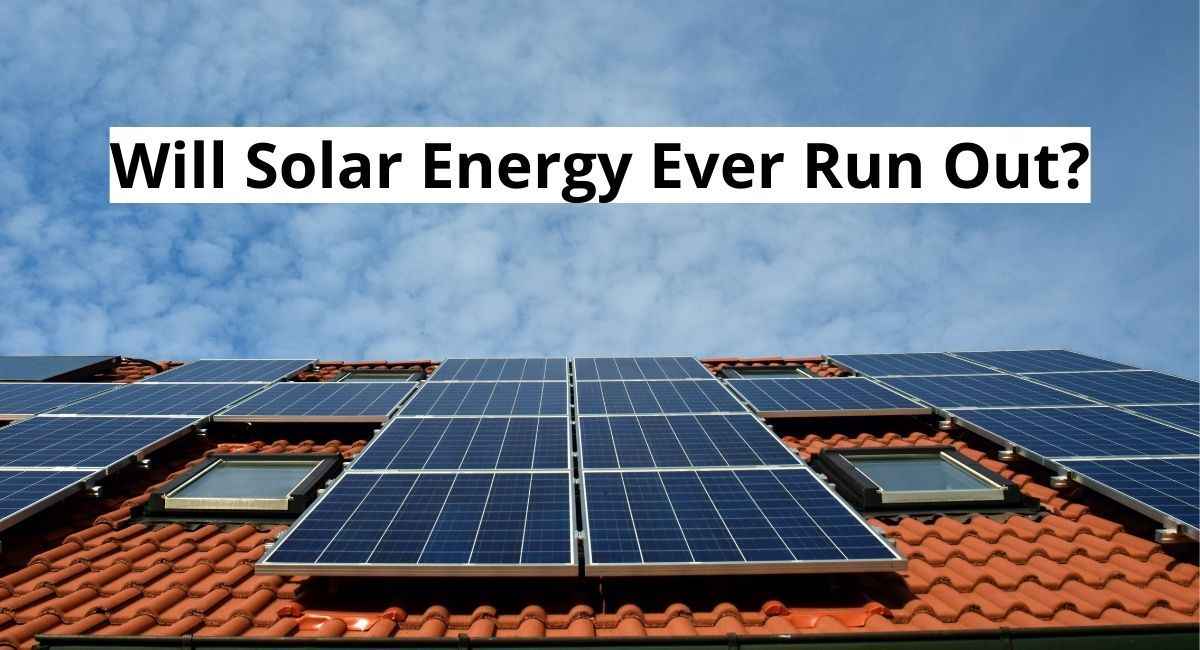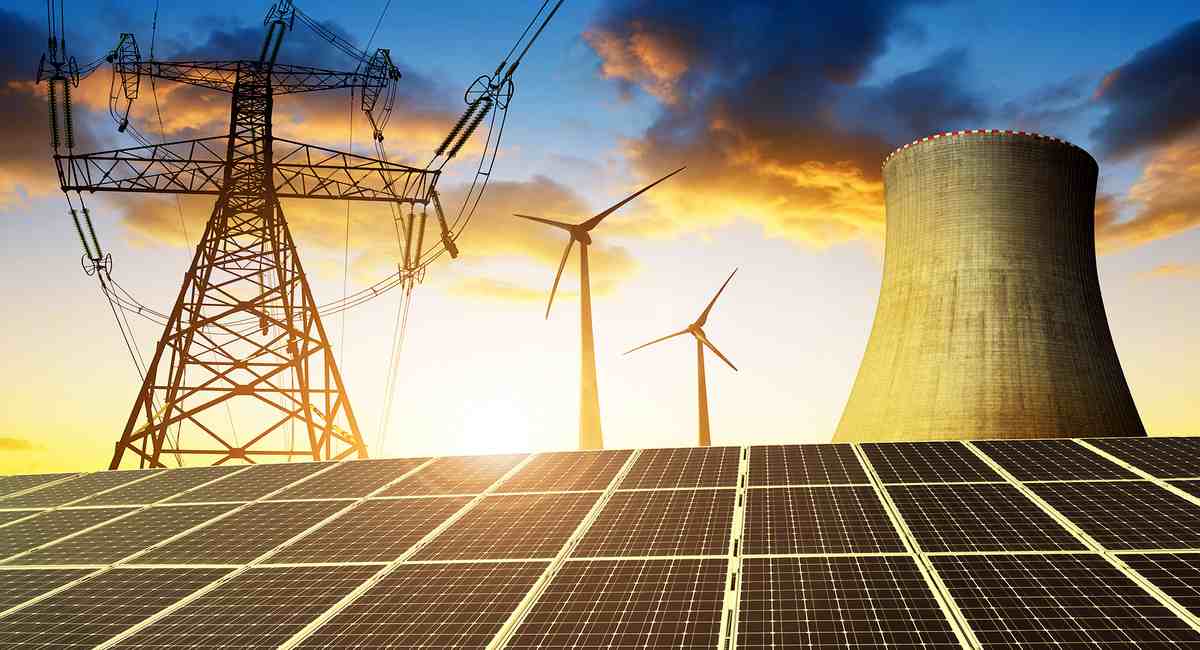Will Solar Energy Ever Run Out? How Long Will Solar Energy Last?

What Is Renewable Energy?
Renewable energy, often known as clean energy, is derived from naturally regenerated sources or processes. For example, sunshine and wind continue to shine and blow, even though their availability is dependent on time and weather. While renewable energy is sometimes seen as a new technology, harnessing nature's power has long been utilized for heating, transportation, lighting, and other purposes. Wind has propelled ships across the oceans and windmills to crush grain. During the day, the sun provided warmth and helped to keep fires blazing late into the evening. However, during the last 500 years or so, mankind has increasingly resorted to dirtier, less expensive energy sources such as coal and fracking gas.
Renewables are becoming a more significant power source. They are expanding at all sizes, from rooftop solar panels on residences that can sell electricity back to the grid to massive offshore wind farms. Some rural settlements depend entirely on renewable energy for heating and lighting.
What Are The Benefits Of Renewable Energy?
Never Runs Out:
Renewable energy, as the name implies, is generated from naturally replenishing sources such as sunshine, wind, water, biomass, and even geothermal (underground) heat.
Unlike coal, oil, and natural gas extraction, which requires huge networks of heavy gear, processing plants, pipelines, and transportation, renewables turn natural resources directly into power. And, unlike many fossil fuels, which are becoming increasingly difficult and costly to get, resulting in the devastation of natural ecosystems and considerable financial losses, renewable energy never runs out.
Zero Carbon Emissions:
The fact that no greenhouse gasses or other pollutants are produced throughout the process is perhaps the most important benefit of renewable energy. Unlike coal power plants, which emit around 2.2 pounds of CO2 for each kilowatt-hour of energy produced, solar panels and wind turbines emit none.
Renewables are helping to offer us emission-free electricity, heat, automobiles, and even air transport as we strive to decarbonize our globe and embrace energy sources that do not contribute to global warming.
Electricity at a Lower Cost:
Solar and wind power are currently the cheapest sources of electricity in many regions of the globe because of the fast rise of renewable energy over the last 10 years. A new solar farm in the United Arab Emirates, famed for its plentiful acreage and sunny weather, just acquired the world's lowest solar energy price of 1.35c per kilowatt-hour. The significant drop in solar and wind prices has even prompted several fossil fuel corporations, notably the six main oil firms, to shift their investments to renewable energy. And, although green energy was originally seen as a "clean-but-expensive" choice, it is now assisting in the reduction of energy costs for consumers all over the globe.
Improved Air and Water Quality:
The use of fossil fuels to create power does more than only affect the climate; it also pollutes the air we breathe and the water we drink. Coal power plants, for example, emit large amounts of carbon dioxide (CO2) and nitrous oxide (N2O) into the atmosphere, which are two of the most powerful greenhouse gasses. They also release mercury, lead, sulfur dioxide, particulates, and hazardous metals, which may cause a variety of health issues ranging from respiratory difficulties to early death. Waterways may also be contaminated by fossil fuel energy, both from air pollution that falls to the ground during rain and from waste materials formed during the manufacturing process.
Renewable energy, on the other hand, produces no pollution, waste, or contamination threats to the air and water. While COVID-19 lockdowns provided a glimpse of pure skies in major cities throughout the globe, renewable energy has the ability to make clean air the new normal.
New Jobs are Created by Renewable Energy:
With a growing emphasis on global warming and many countries establishing aggressive carbon-reduction objectives, one of the unexpected benefits of renewable energy is that it has swiftly become a significant source of new employment development.

Renewable energy currently employs three times as many people in the United States as fossil fuels, according to the Bureau of Statistics, and wind turbine technicians and solar panel installers are expected to be among the fastest-growing occupations in the next decade. Furthermore, many renewable energy jobs provide above-average earnings, in addition to employing millions of people for long periods of time.
Can Renewable Energy Sources Replace Fossil Fuels?
The global reliance on oil, natural gas, and coal, as well as the harm this reliance causes, is widely established. However, the shift away from fossil fuels is already underway and just has to be accelerated. Alternative energy sources, from electricity to public and private transportation to thermal comfort, can efficiently replace fossil fuels in essential sectors that keep enterprises and governments operating.
According to renewable energy policy think tank REN21, the majority of obstacles to moving out of the fossil fuel era are political rather than practical. While governments have a big share of the responsibility for developing competitive alternatives to fossil fuels, as REN21 puts it, "patience and confidence in politicians who dither and waver is diminishing." As a result, citizens and activists, ranging from grassroots organizers to large corporations, are putting increasing pressure on them. Major actors seem to be paying attention. President Joe Biden of the United States, for example, took unilateral steps to rejoin the Paris Climate Agreement within hours of taking office. Adherence to the agreement's promises will be critical in the transition away from fossil fuels and toward renewable energy. With the signing of the Paris Climate Agreement in 2016, participating nations "pledged to decrease carbon dioxide (CO2) and other greenhouse gas emissions, as well as to adapt to the repercussions of climate change," according to the International Renewable Energy Agency (IRENA). Countries can drastically cut one key source of the problem: energy-related CO2 emissions, by scaling up renewable energy. "
According to another IRENA report, employment in the renewable energy industry continues to rise in practice. This is significant because business or individual resistance to long-term energy change is often motivated by concerns about short-term repercussions on employment, job development, or economies. However, the cost of renewable energy is lower than it has ever been, and digitization may help the electricity, heating, cooling, and transportation sectors integrate more smoothly. The ability to establish a world powered by renewable energy would need effective integration, but the idea is within grasp, as shown by pioneering countries like Denmark, where the government has vowed to phase out fossil fuels by 2050.
Solar energy, in particular, is on the rise, even in nations like Denmark that are slower to adopt significant pledges. According to the International Energy Agency, solar energy is one of the only technologies now on pace to reach global climate objectives. Not only the environment, but also the economy, stands to benefit: solar PV (photovoltaic systems) and onshore wind are the most cost-effective means of installing new electricity-generating facilities in the majority of nations. Solar PV and wind power may pose a threat to current fossil fuel facilities, depending on the country's resources and funding options. Indeed, according to IEA forecasts, total installed wind and solar PV capacity will surpass natural gas by 2023 and coal by 2024. Even if substantial progress is being made, a century is likely the minimum length of time required for a thorough redesign of the energy system and a complete shift to renewables, according to a variety of estimations and research.
Solar Energy - A Clean Source?
Solar energy holds the key to a sustainable energy future. Every day, the sun produces significantly more energy than humans need to power the whole planet. The sun produces more than enough energy to fulfill the whole world's energy demands, yet unlike fossil fuels, it will never run out. The major limitation of solar power as a renewable energy source is our ability to transform sunlight into electricity in an efficient and cost-effective way, which is made feasible by solar design.
When solar panels are used to generate power, no greenhouse gas emissions are emitted into the environment. Solar power is an essential energy source in the transition to clean energy production since the sun delivers more energy than we'll ever need.
Solar panels offer minimal operating costs compared to other kinds of energy production after they are installed. Because no fuel is needed, solar power may generate vast volumes of energy without the risk or price of ensuring a fuel supply.
Solar power has a lower environmental impact than other power-generating technologies since it is a renewable, CO2-free energy source. The biggest effect is on the manufacturing and supply of the specific minerals and metals needed to manufacture solar panels. As a result, solar energy is one of the most environmentally friendly and plentiful renewable energy sources.
How Green is Solar Energy?
In addition to being renewable, solar energy is sometimes referred to as a "green" energy source since it has no negative environmental consequences. While fossil fuels emit greenhouse gasses and other particles into the environment, solar energy generation produces no emissions and may be done everywhere the sun shines.

Many individuals are worried about the environmental impact of solar panel production. Making high-quality solar modules, like any other product, requires resources and energy, implying that solar energy production has some environmental effect. The good news is that this negative effect pales in comparison to the advantages of solar panels' zero-emissions electricity. According to studies, it only takes a few months for a solar panel to "balance out" the effect of its production.
With the emergence of new panel technologies and designs, the environmental impact of manufacturing solar panels is reducing year after year. Solar panel efficiency, for example, is increasing year after year. This implies that solar panels are improving their ability to convert sunlight into emissions-free electricity, and the relative environmental cost of manufacturing panels compared to the clean energy they provide is fast decreasing.
Solar panels may also be recycled, and the components inside them can be reused, further reducing solar energy's total environmental impact. Panel recycling techniques, like panel efficiency, are improving all the time, lowering the lifespan effect of solar energy even further.
Final Thoughts:
Solar energy is one of the cleanest and most plentiful renewable resources, which means it will never be depleted. Solar energy is energy that is directly obtained from the sun. Enough sunlight shines on the earth's atmosphere in only one hour to generate power for every person on the planet for a year!
Solar power is becoming more economical and accessible than ever before. Solar panels collect sunlight, which is the planet's most plentiful and readily accessible renewable energy source, and transform it into useful power. In a nutshell, it is energy that is sustainable—something that can’t run out.

